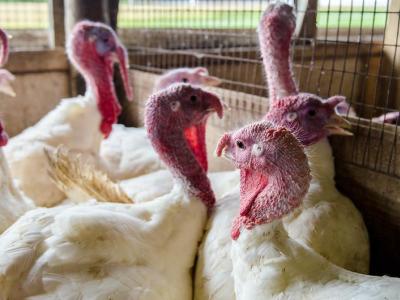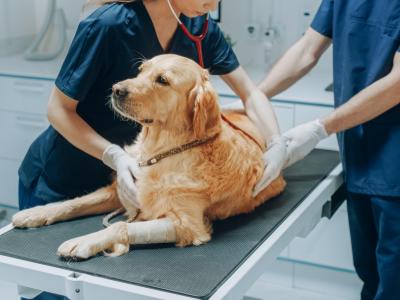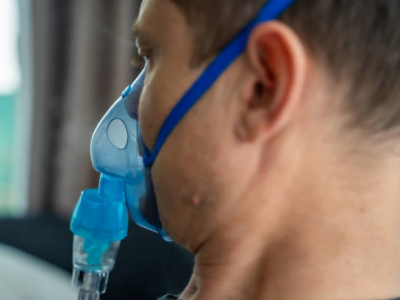Study says pigs, llamas susceptible to MERS-CoV infection
Pigs and llamas appear prone to infection with Middle East respiratory syndrome coronavirus (MERS-CoV), according to researchers who experimentally infected four animal species and reported their findings yesterday in Emerging Infectious Diseases.
Spanish and Dutch investigators inoculated 14 pigs, 8 llamas, 14 sheep, and 8 horses with MERS-CoV intranasally. They then collected nasal swabs at various times afterward.
Three each of the llamas, horses, and pigs excreted mucus after inoculation. Only pigs and llamas, however, excreted virus in the nose, as determined by polymerase chain reaction testing. Starting 2 days after inoculation, 7 of 14 pigs and 7 of 8 llamas tested positive for infectious virus for at least 1 day. Infectious MERS-CoV was found in pigs 4 days after inoculation and in llamas 7 days after inoculation, and viral titers were lower in the pigs.
A similar study last year in the journal Viruses found no MERS-CoV shedding in goats, sheep, and horses.
Regarding the results in pigs, the authors wrote, "The finding that pigs can be infected with MERS-CoV suggests that other members of the family Suidae could be susceptible to the virus, such as common warthogs (Phacochoerus africanus), bushpigs (Potamochoerus larvatus), and wild boars (Sus scrofa scrofa). Indeed, these animals are commonly found in the Greater Horn of Africa or the Middle East, sharing territories and water sources with dromedaries."
Nov 30 Emerg Infect Dis study
Aug 19, 2015 Viruses study
H5N6 avian flu confirmed in Chinese farmer
The Hong Kong Centre for Health Protection (CHP) said today that a farmer has been diagnosed as having H5N6. The patient is from China's southern Guangxi province, and her case raises China's human cases of H5N6 since 2014 to 17, according to a case list maintained by FluTrackers, and infectious disease news message board.
The patient is a 30-year-old woman who worked on a farm in Liuzhou. She started to develop symptoms on Nov 8 and was hospitalized on Nov 18, where she remains in serious condition. According to the CHP, the woman had contact with dead poultry before symptom onset.
The CHP said agricultural workers should take extra precautions around dead poultry, and the public should avoid poultry markets, farms, and slaughterhouses. Good hygiene should be practiced by all who handle animals, and the use of nose and mouth coverings are encouraged if a person begins to experience flu-like symptoms.
"Based on the seasonal pattern of avian influenza viruses, their activity in the Mainland is expected to increase in winter. The public should avoid contact with poultry, birds and their droppings and should not visit live poultry markets and farms to prevent avian influenza," a CHP spokesperson said.
Dec 1 Hong Kong CHP press release
FluTrackers H5N6 case list
More than 2,000 scientists sign letter to Trump urging respect for science
Two thousand-three hundred scientists, including 22 Nobel prize winners, have written an open letter to president-elect Donald Trump urging him to respect science and protect the Clean Air Act and the Endangered Species Act, calling those laws the "bedrock" of public health and environmental science in America.
Trump has raised the ire of scientists and researchers several times in the last 18 months, most recently when he tweeted on Nov 2 that climate change is based on "faulty" science. Trump has also spoken of dismantling the Environmental Protection Agency (EPA) and canceling the Paris climate agreement. Trump also met with several prominent anti-vaccine advocates while campaigning for the presidency.
"Federal agencies should be led by officials with demonstrated track records of respecting science as a critical component of decision making," the letter states. "Federally funded scientists must be able to develop and share their findings free from censorship or manipulation based on politics or ideology."
The letter was sponsored by the Union of Concerned Scientists and was signed by scientists in all 50 states.
Dec 1 open letter to Trump
Outbreak of drug-resistant Pseudomonas linked to aromatherapy oil
A paper today in the American Journal of Infection Control describes an outbreak of extensively drug-resistant Pseudomonas aeruginosa (XDR-PA) at an Austrian hospital that the authors believe was likely tied to a bottle of aromatherapy oil shared by the patients.
The outbreak involved 7 of 33 patients admitted to the surgical intensive care unit of the University Hospital at Innsbruck within a month in 2012. The investigation was initiated after an increase in XDR-PA isolates in various clinical specimens among the patients was observed, with investigators looking at relevant patient data, collecting samples from healthcare workers and the hospital environment (washbasins, medical devices, and medical care products), and observing infection control procedures.
Among the 145 environmental samples collected, XDR-PA was present in 6, all of which came from a washbasin and a bottle of aromatherapy oil that was directly applied to the skin of the 7 infected patients. All the XDR-PA strains yielded identical antimicrobial patterns. Molecular typing of all patient isolates and 4 of the environmental samples, all from the same room, revealed an identical genotype.
The investigators hypothesize that the oil was either initially contaminated by a colonized or infected patient, or that backsplash from wash water discharged into basins inside the patients' rooms contaminated the area where the oil and other medical care products were placed. An unopened bottle of the oil tested negative, which ruled out the possibility that the oil was contaminated at the manufacturer's facility.
When healthcare workers stopped discharging the wash water into the basin, discontinued the sharing of aromatherapy oil, and reinforced infection control measures like hand hygiene and environmental disinfection, the transmission of XDR-PA stopped.
The authors say their findings suggest that improper storage and sharing of patient care oil are potential risk factors for nosocomial outbreaks of XDR-PA.
Dec 1 Am J Infect Control study
Report details pain, eye problems a year after Ebola infection
A report yesterday thatlooked at medical records of Ebola virus disease (EVD) survivors found many EVD-related sequelae 1 year after discharge, most commonly joint pain, headache, muscle pain, and eye problems.
The study, in Emerging Infectious Diseases, was conducted to assess the sequelae facing the thousands of survivors of the 2013-2015 Ebola outbreak in West Africa. Researchers used the medical records of 115 survivors from the Survivor Clinic of Kenema Government Hospital in Kenema, Sierra Leone, on November of 2015 to document and measure the after-effects of Ebola infection. The country was named an Ebola-transmission free zone that month, and the country had roughly 4,000 EVD survivors.
The median age of the survivors studies was 28, and 60.9% were female. The average number of clinic visits post-discharge was five, most occurring within the first year after infection. During the 621 clinic visits, headache was reported 63.1% of the time, followed by fever (61.7%), and myalgia (43.3%). Eye problems, including vision disturbances, were reported in 37% of survivors.
"Because this outbreak has ended in the 3 most affected countries and because the health needs of survivors are complex and not yet fully understood, the risk exists that sustained essential services might not be available for EVD survivors in the region," the authors concluded.
Nov 30 Emerg Infect Dis study
Investigation details adverse smallpox vaccine reaction in study participant
A 57-year-old New Mexico man who was immunized with ACAM 2000 smallpox vaccine at a plasma donation center as part of a study had an adverse reaction, probably because he inadvertently spread the vaccinia virus while changing the injection-site dressing, according to a report today in Morbidity and Mortality Weekly Report (MMWR).
The study, by a team from the New Mexico Department of Health (NMDH) and the US Centers for Disease Control and Prevention (CDC), required collecting plasma containing high vaccinia antibodies to be used in the production of vaccinia immune globulin intravenous (VIGIV), used to treat serious reactions to smallpox vaccine. Eleven days after the man was immunized he started having a fever and noticed a few lesions around the inoculation site. The following day he reported back to the plasma center with numerous lesions on his other arm, back, and abdomen.
At the request of the plasma center, NMDH officials arranged for possible hospital admission for VIGIV treatment and consulted with the CDC on the investigation plan. Orthopoxvirus and nonvariola orthopoxvirus DNA were detected in the man's specimens, consistent with ACAM2000 vaccination. An investigation of the man's living arrangements and injection-site care found that he probably inadvertently autoinoculated himself by handling the area around the vaccination site during dressing changes. The care team advised him about proper techniques and about steps for avoiding spread of the virus during lesion healing.
Health officials reported the event to the CDC's Vaccine Adverse Events Reporting System and noted that although inadvertent spread is a known adverse event, New Mexico and four of five public health departments didn't know the study was being conducted, showing the need for better communication between commercial sites and state and local health officials.
Dec 2 MMWR report














